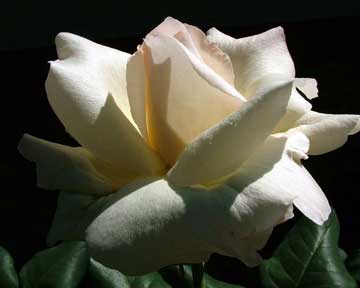 by Preston MacDougall June 22, 2006
Actually, I had wanted to visit this museum ever since my daughter did, along with the rest of her classmates in Lasater's Amazing Fifth, over three years ago. (Her older brother Devon made the same visit, with the same teacher, and had the same reaction, four years prior to that. Dads sometimes need to be reminded what's important.) I have been to D.C. four times since my daughter's visit, but always found a reason not to go. I guess I was in the mood on this fifth trip, and it was amazing.
Prior to Aurora Claire's class trip, I had met tattooed Holocaust survivors, and read multiple autobiographical accounts, such as Italian chemist Primo Levi's "Surviving Auschwitz". And, like many people, I had seen Sophie's Choice and Schindler's List, in addition to several documentaries. These all created an emotional need to visit the sites of the concentration camps themselves one day. What made me want to visit the museum in D.C. was the impression that it made on intelligent and optimistic adolescents from Tennessee. I was impressed by the passion and detail in my daughter's recollections, and by her declaration that it would be the first stop if the family ever took a capital vacation. She was inspired to read "Number the Stars" by Lois Lowry, as well as the diary of a less-fortunate teenage girl, Anne Frank. As an educator, who teaches a subject that too many students are preconditioned to loath, I was just as interested in how the museum presented Holocaust history as in the exhibits and historical artifacts themselves. In retrospect, the key to the museum's firm and long hold on my attention was its combination of imaginative multimedia exhibits and their exhaustive detail; from the Machiavellian political machinations that turned the democratic Weimar Republic into the Hitler dictatorship, to the nightmarish life in ghettoes and concentration camps, and finally to the manufacture and murderous application of the Zyklon-B canisters (that released, by evaporation, poisonous hydrogen cyanide, also known as "Prussic acid"). There are countless other historical artifacts, often presented from multiple perspectives. General Eisenhower's personal reflections, after his visit to camps that were liberated by U.S. troops, are presented alongside hard-to-watch documentary films made by media accompanying British and Russian liberators. As numerous and impression-forming as the historical artifacts are, I still find the number of Holocaust victims unfathomable. From the depth of these horrific artifacts, however, and nearing the end of the exhibits, I discovered a blooming inspiration: the leaves of the White Rose. I refer to both the anti-Nazi leaflets, and to the students and their professor who wrote, printed, and distributed them at great peril in 1942 and 1943. I have since learned that these heroic stories are well documented, so I will be brief, and tell only part of the story. Hans and Sophie Scholl were brother and sister. Along with a few other members of what came to be called the White Rose, they studied at the University of Munich and were influenced by Professor Kurt Huber, a scholar with wide interests in musicology, psychology and philosophy. Among the museum's displayed contents of their leaflets was the following resonating admonition: "Nothing is so unworthy of a civilized people as allowing itself to be governed without opposition by an irresponsible clique that has yielded to base instinct." Most of the members of the White Rose were arrested, and executed by guillotine, often on the same day as brief show trials. From the guillotine, Hans shouted "Long live freedom!" Even after these executions, some of their fellow students continued distributing the leaflets. One was chemistry student Hans Leipelt. This Hans had been expelled from the University of Hamburg because his mother, who had a doctorate in chemistry, was from a Jewish family. Hans continued his studies at Munich, where the director of the Chemical Institute, Nobel laureate Heinrich Wieland, ignored Nazi rules regarding race. Wieland knew bilious behavior when he saw it - his 1927 Nobel Prize was for the investigation and chemical identification of the bile acids. Hans Leipelt was arrested, not for his role in distributing the leaflets, but for charitably raising funds for Professor Huber's destitute widow and their children. Later, he too was executed. On the sixth and final White Rose leaflet, which Hans copied with a portable typewriter, he added the heading "And their spirit lives on, despite all!" When I returned to Tennessee, and shared my museum experiences with my children, it occurred to me that, in particular, the spirit of Hans and Sophie - brother and sister - indeed lives on, despite all.
On the Web:
Publish A Letter on SitNews Read Letters/Opinions Submit A Letter to the Editor
|
||
